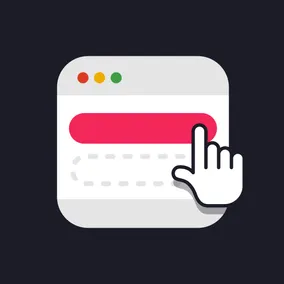Manage Your Website like a Product

Jess Spoll, Former Senior Product Manager
Article Category:
Posted on
If you want your website redesign to be successful, apply these principles from software product management.
When someone sets out to build a new digital product, they plan for it to evolve and include additional features over time. Products start as minimum viable products (MVPs) and then grow over time through user testing, iteration, and continuous development.
Websites, on the other hand, are largely stuck in the “waterfall” method of planning. When someone decides that they want to redesign their site, they first go through a design phase. Then, a front-end developer builds out those designs. They make sure that all the copy and every image is perfect, and finally, they launch the site. And then the site sits dormant for years until they want to do it all over again.
But why not treat website redesigns as products instead of projects? We can easily apply a lot of the same planning principles from product development to website redesign projects. It’s just a matter of reframing how we think about managing website redesign projects.
Let’s discuss some of those planning principles:
1. Outline a main objective
Products have clear objectives. They’re intended to serve customers in a specific way, and they are continuously evolving and developing to meet the changing needs of those customers.
A website should have objectives as well: converting sales, keeping users engaged with content, driving enrollment, etc.
Step 1 is identifying what your objective is. Once you have that nailed down, everything else should be viewed with that lens: does a request help your website meet your objective?
Product teams include a User Experience (UX) designer to ensure that the product is easily usable and accomplishes its goals. A website team should always include a UXer, too. Your website needs someone who can take your objective and make sure that the plan for the website will help you meet it. Without this, you could have an aesthetically pleasing site that doesn’t do anything for you.
2. Develop an MVP
Most products start as MVPs. Why build a bunch of features for your product if you haven’t yet proven that your customers will like the idea of your product?
Once the MVP is launched, the user testing begins. That’s where the product team gets feedback on how well it meets its objectives from the people who really matter. New features are added and the product evolves nimbly to meet the needs and desires of its users.
Launching with an MVP helps avoid the situation where you spend a bunch of time and money on features that your users don’t really want or need. The best decision-making aid is user testing.
Your website needs this kind of validation, too. You won’t know if you are meeting your objective until you launch and get some real feedback. So, take that laundry list of requirements for your new site and ask yourself which requirements will be crucial to an initial launch. The MVP version of your site should only contain what you need to validate your website objective with users.
If you think about your website as having a finished state, you’ll never get to launch, because “requirements” will continue to be added to that list of tasks to get to that finished state. Your website can launch without every bell and whistle that you’ve dreamed up. Users won’t fault you for adding new features after an initial launch. The alternative is keeping users in an old site that isn’t meeting your business objectives.
3. Prioritize
After a product launches, product managers are constantly triaging requests and ordering them by priority. This prioritization is driven by how much the request helps meet the main objectives of the product.
You should do the same for your website. If you started with your MVP launch, then you’ll have a list of “post-MVP” upgrades and feature requests. Consider how much value each request might add for a user, and order the list accordingly.
With every new request that you receive, ask “how does this help meet the objective of the site?” If it doesn’t, then it goes to the bottom of the list.
If you maintain this focus, then you’ll always be working to keep your website relevant and useful for your users.
If you’re looking to redesign your website, it’s likely because the current one isn’t helping to meet your objective. The best thing you can do to ensure that your redesigned one does is to treat it like a product.